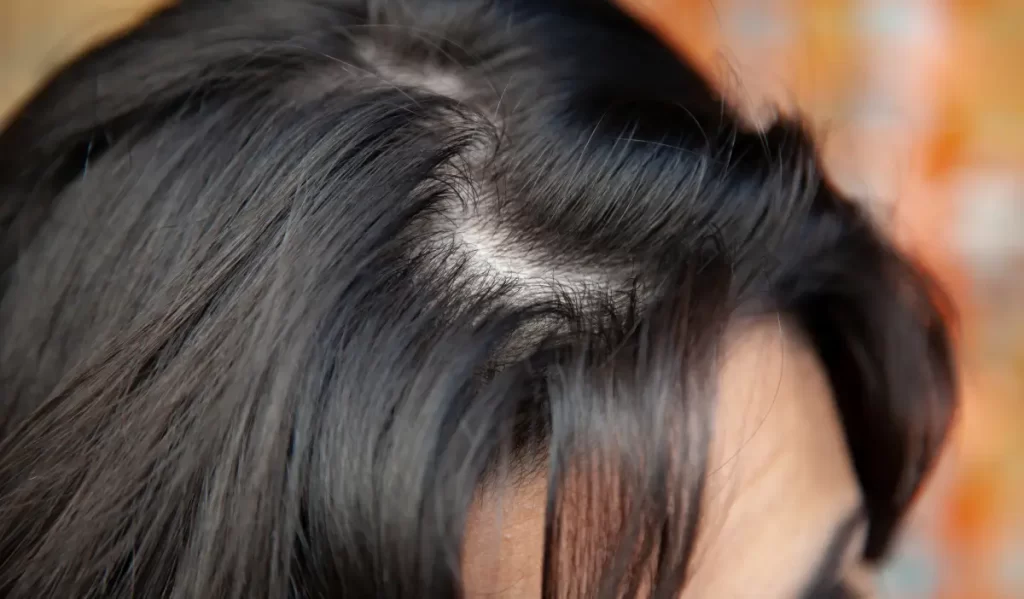Are hair transplants for women successful?

Hair loss in women and men usually takes on different forms, with most men observing baldness or thinning around the crown and top of their heads, while women most commonly experience a diffused thinning of the hair. For this reason, hair transplantation is customised to suit the varying requirements from patient to patient, with procedures taking on different forms such as a hair transplant for women.
The results you can achieve with a female hair transplant
A hair transplant for women offers the opportunity to personalise your hairline according to your aesthetic desires. This may involve filling the hairline in a rounder shape further down the forehead to create the illusion of a smaller, more feminine forehead so to speak. If your hairline is not what concerns you, on the other hand, a female hair transplant may also be implemented to increase hair density to camouflage hair loss caused by any of the hair loss contributors stated in “The best hair transplant for women candidates” section of this article.
Increased density
Hair transplants for women involve the relocation of hair from denser parts of the scalp to parts with less coverage for the purpose of making the hair appear thicker, fuller and healthier. The maximum density you can achieve as a result of your female hair transplant is dependent on both the severity of baldness or thinning in the problematic regions of your scalp and the amount of donor hair you have for transplantation.
Revamped hairline for transgender women
Many transgender women undergo hair transplantation as a means to transform their masculine hairline into a more feminine hairline by rounding out the hairline as a replacement for the M shape hairline that most men possess naturally. This plays a major role in the transition from a predominantly masculine aesthetic to a feminine aesthetic. This also acts as a precaution against a receding hairline which may occur within the years to come due to the hair follicles having already been exposed to DHT, the male hormone most commonly responsible for male pattern baldness.
Most common causes of hair loss in women
There are plenty of reasons why women may experience hair loss, it is not just an age-related problem. Premature hair loss often leads to a desire to regain your locks along with the confidence that accompanies it. Many women wishing to undergo female transplantation:
- are older than 40 years old
- have recently given birth
- have undergone chemotherapy or suffered hair loss side effects as a result of other medications
- limit themselves to restrictive diets
- have undergone rapid weight loss recently
- have a tendency to wear their hair in tight upstyles such as tight braids or ponytails which can result in traction alopecia
- regularly expose their hair to harsh chemicals such as bleach
- are in the midst of menopause
The best candidates for female hair transplantation
Your candidacy for female hair transplantation will be discussed with your surgeon during your consultation. The best candidates for hair transplantation include women with:
Sufficient donor hair for transplantation
First and foremost, if you do not possess enough donor hair to be transplanted to the problematic areas of the scalp, your hair results may not meet your expectations and you will likely be advised against the procedure. This is because you will only be able to make use of your own hair for transplantation to avoid rejected hair follicles.
Once the follicle is extracted from one part of the body and implanted somewhere else, the native region of the follicle will no longer have the means to produce any further hair shafts. Therefore, a low density of donor hair will result in a repositioned bald spot following the extraction of the grafts, which completely contradicts the purpose of hair transplantation, to begin with.
Female pattern baldness
This condition is outlined by a hair loss from the top, front and crown of the head, leaving the hair feeling thin and reducing coverage of the scalp. The causes of female pattern baldness vary from environmental to hormonal, to your genetic predisposition which is what female pattern baldness is mostly attributed to.
Genetic predisposition is outlined as an increased likeliness of developing a particular condition as a result of the genetic composition that you have inherited from your parents. Should you struggle with female pattern baldness, you will still be able to increase density, should you be found to possess enough donor hair.
Scarring alopecia
Less commonly referred to as cicatricial alopecia, scarring alopecia is an umbrella category of different diagnoses such as follicular degeneration syndrome and eosinophilic pustular folliculitis, with the most common theme in side effects being the replacement of damaged hair follicles with scar tissue.
Scarring tissue is made up of collagen that acts as a shield of protection for the skin underneath it. Hair transplantation using both the FUT and FUE methods can act as a reversal of scarring alopecia, with destructed hair follicles being replaced by live follicles that are actively producing hair.
Traction alopecia
Because traction alopecia is caused by repeated pulling of the hair which inflicts trauma on the hair follicles instead of a genetic or autoimmune disorder that will lead to further balding over time, hair transplantation is a suitable and successful hair restoration option for those with this type of hair loss.
The symptoms of this type of hair loss include redness, a significant amount of short, damaged hair on the hairline or in a specific region of the scalp, itching of the scalp and visible thinning of the hair. Of course, you are advised to discontinue styling your hair in such a way that could cause further damage to the hair shafts or compromise the success of your female hair transplant.
Is there a difference between male and female hair transplantation?
There are 2 main differences between male and female hair transplants. One difference is the natural growth pattern of each gender’s hairline and the other is the natural hair loss progression experienced by each gender.
Hairline differences
Female hairlines are most commonly unaffected by hair loss or thinning prior to the hair transplant procedure. This is the complete opposite scenario for most men undergoing a permanent hair restoration procedure. As men usually start observing thinning or balding in the form of a receding hairline before further hair loss is observed. Let’s have a look at what makes male and female hair growth patterns different to better understand the considerations that should be made to ensure a natural appearance.
Female hairline | Male hairline |
Usually grows in an M shape | Usually grows in an inverted U shape |
Balding of the hairline, crown and top of the head | Diffused balding observed in the crown, top of the head and sides of the head |
The hairline is usually further down in comparison to women | The hairline is usually higher up in comparison to men |
The front hairs tend to grow in a forward direction | The front hairs tend to grow in the opposite direction of the face |

U-Shape Female Hairline

M-Shape Male Hairline
Natural hair loss progression in women versus men
The hair loss pattern observed in males and females is easily distinguished from one another. Female pattern baldness starts off as a gradual thinning of the hair from the front of the centre part and continues in a diffused manner around the sides, back, top and crown of the head, providing less and less coverage as the hair continues to thin. Male pattern baldness is first observed as the hair recedes in an M shape, creating 2 hollows on the sides of the forehead. The hair then begins thinning on the top of the head, leading to a rounded bald section on the top of the head. The different balding patterns may require different transplant methods to camouflage the severity of the hair loss.
For example, women are more prone to thinning of the hair all over the scalp which makes the Direct Hair Implantation (DHI) hair transplant method a more suitable one for its ability to increase hair density and scalp coverage in areas that already have hair. Whereas men are more prone to larger sections of balding which makes the Follicular Unit Extraction (FUE) hair transplant method more suitable.
Because each method is most suited to a specific type of hair loss problem, it is best to undergo a combination surgery in which both methods are used in conjunction to repair the affected areas as required.
For example, women are more likely to require more DHI transplantation, however, your surgeon may find that using FUE on the balder parts of your scalp will be more beneficial to you. The same goes with men, although FUE may be most suitable for the tops of their heads, DHI may be the best option for the parts of their in which they still have hair back lack density.
